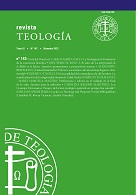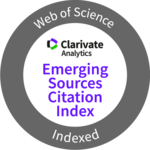From the Sacredness of Nature to that of Man. The Transformation of Religiosity during the Middle Ages
DOI:
https://doi.org/10.46553/teo.60.142.2023.p123-157Keywords:
Middle Ages; Religiosity; Christianism; Church; Reform; Agriculture Cycles; Medieval CityAbstract
This article focuses on the process of transformation of Christian religiosity during the Middle Ages between the 11th and 15th centuries. It shows how religiosity, ancestrally linked to the value of the earth and the cycles of light, begins to change as mankind manages to obtain other means of subsistence centred on the valuation of his own human capacity. Demographic, economic, political and social changes play a central role, and religiosity moves in step with these factors. The autonomy from feudal lords, the rise of free cities, craft production and trade have a significant influence on religious understanding and expression that focuses on human capabilities and the value of freedom. The article attempts to enable the reader to understand the movement and the main components of this process through some examples taken from different geographical areas. Medieval culture, and thus religiosity, will continue its path of transformation. The unresolved needs and tensions of the period which are expressed through the idea of Church reform, place us in the prelude to the emergence of the confessions in the 16th century, where they find new channels of expression.
Downloads
References
Andreu Gálvez, Manuel. «La adaptación del modelo de ciudad medieval castellana en América y la configuración del sistema municipal indiano». En Gustavo Garduño Domínguez y Manuel Andreu Gálvez, América en el mundo hispánico. Una revisión jurídica, histórica y política. Pamplona: Eunsa, 2019.
Angenendt, Arnold. Geschichte der Religiösität im Mittelalter. Stockach: Primus Verlag, 2009 [4].
Bachmann-Medick, Doris. Cultural turns. New orientations in the study of culture. Berlin: De Gruyter, 2016.
Baloup, Daniel, David Bramoullé, Benoît Joudiou. I mondi mediterranei nel medioevo. Bologna: Il Mulino, 2020.
Baranda Leturio, Nieves. La prosa y el teatro medievales. Madrid: Universidad Nacional de Madrid a distancia, 2009.
Borgolte, Michael. Die Welten des Mittelalters. Globalgeschichte eines Jahrtausende. Munich: Beck, 2022.
Breustedt, Sonja. «„Stadtluft macht frei“? Das Bürgerrecht im Mühlhäuser Rechtsbuch. Ein Werkstattbericht». Forum Historiae Iuris (2019): 1-19.
Dawson, Christopher. La religión y el origen de la cultura occidental. Madrid: Encuentro, 2010.
Dirlmeier, Ulf; G. Fouquet; B. Fuhrmann. Europa im Spätmittelalter: 1215 – 1378. München: De Gruyter, 2009.
Duby, Georges. Hombres y estructuras de la Edad Media. Madrid: Siglo XXI, 1997.
Fernández Conde, Francisco Javier. «Religiosidad popular y piedad culta». En Sánchez Conde, Francisco Javier, La religiosidad medieval en España: Plena Edad Media, vol. 1 (siglos XI-XIII) Oviedo: Trea, 2005; Baja Edad Media, vol. 2 (siglos XIV-XV). Oviedo: Trea, 2011.
Gilson, Étienne. El espíritu de la filosofía medieval. Madrid: Rialp, 2004.
Lopes Frazão da Silva, Andréia Cristina. «Normatização e relações de poder nas atas do Concilio de Coyanza». Anos 90, supl. Universo normativo e relações de poder na Idadae Média, Porto Alegre, 20, 38 (2013) 103-126.
Hernández Rivera, José Adán. Evolución histórico-jurídica del municipio en el estado libre y soberano de Puebla. Tesis de Licenciatura. Derecho con área en Derecho Internacional. Departamento de Derecho, Escuela de Ciencias Sociales, Universidad de las Américas, Puebla, 2005 http://catarina.udlap.mx/u_dl_a/tales/documentos/ldin/hernandez_r_ja/portada.html, Acceso el 18 de mayo de 2023.
Le Goff, Jacques. La Baja Edad Media. Madrid: Siglo XXI, 2016.
Hernández Rivera, José Adán. La Edad Media explicada a los jóvenes. Barcelona, Buenos Aires, México: Paidós, 2015.
Hernández Rivera, José Adán. Un longe Moyen Âge. Paris: Tallandier, 2004
Ferrand, Angélique. «Le zodiaque dans la décoration ecclésiale médiévale: une autre manière de penser le temps et l’espace». Bulletin de centre d’études médiévales d’Auxerre (2015) 10. Christian Heck (dir), Thèmes religieux et thèmes profanes dans l’image médiéval: transferts, emprunts, oppositions. Turnhout: Brepols, 2013.
Flower, Harriet; Shaw, Brent (eds.). Empire and religion in the Roman world. Cambridge: Cambridge University Press, 2021.
García Gallo, Alfonso. «El concilio de Coyanza», Anuario de Historia del derecho español. 20 (1950): 275-633.
Galende Díaz, Juan Carlos. «La biblioteca del Colegio mayor salamantino de San Bartolomé en el siglo XVIII». Revista General de Información y Documentación, 10, 2, (2000): 33-69, 54; Biblioteca General Histórica de la Universidad de Salamanca, ms. 1997.
Henry-Claude, Michel Laurence Stefanon y Yannick Zaballos y Sylvie Fournier. Principes et éléments de l’architecture religieuse médiévale. Monsempron-Libos: Fragile, 1997.
Ivetic, Egidio. Il Mediterraneo e l’Italia. Dal mare nostrum alla centralità comprimaria. Soveria Manelli: Rubbettino, 2022.
Kieckhefer, Richard. Magic in the Middle Ages. Cambridge, Cambridge University Press, 2021.
Krieger, Gerhard (Hg). Verwandschaft, Freundschaft, Bruderschaft. Sozialen Lebens und Kommunikationsformen im Mittelalter. Berlin: Akademie Verlag, 2009).
Masoliver, Historia del monacato cristiano, 3 volúmenes. Madrid: Encuentro, 19942, vol. II De san Gregorio Magno al siglo XVIII.
Manzi, Ofelia y Grau-Dieckmann, Patricia. «Los textos apócrifos en la iconografía cristiana». Mirabilia 6 (2006).
McDougall, David Charles. Linguistic variation in the Fazienda de Ultramar. London: Queen Mary University of London, 2017.
Navarro Espinach, Germán. «Las cofradías medievales en España». Historia 396 (2014) 107-133.
Oronzo Giordano. Religiosità popolare nell’alto medioevo. Bari: Adriatica, 1979.
Paz Lima, Jimena. «La doctrina zoológica en la obra de San Alberto Magno». Studium Revista de humanidades 15 (2009): 29-51.
Palermo, Luciano, Andrea Fara, Benito Pere (eds.). Políticas contra el hambre y la carestía en la Europa Medieval. Lleida: Milenio, 2018.
Pellegrini, Letizia. «Predicazione, catechesi e sermo corporeus: una raccolta domenicana di exempla della fine del XII secolo». En I fratri predicatori nel Duecento. Verona: Cierre Edizioni, 1996, 203-242.
Simek, Rudolf. Monster im Mittelalter. Die Phantastische Welt der Wundervölker und Fabelwesen. Köln, Weimar, Wien: Böhlaus, 2015.
Swanson, R. N. (ed.). Routledge History of Medieval Christendom 1050-1500. Londres, Nueva York: Routledge, 2015.
Vauchez, André. Les laïcs au Moyen Age. Pratiques et expériences religieuses. Paris: Cerf, 1987.
Downloads
Published
How to Cite
Issue
Section
License
Copyright (c) 2023 Federico Tavelli

This work is licensed under a Creative Commons Attribution-NonCommercial-ShareAlike 4.0 International License.


















 Teología
Teología